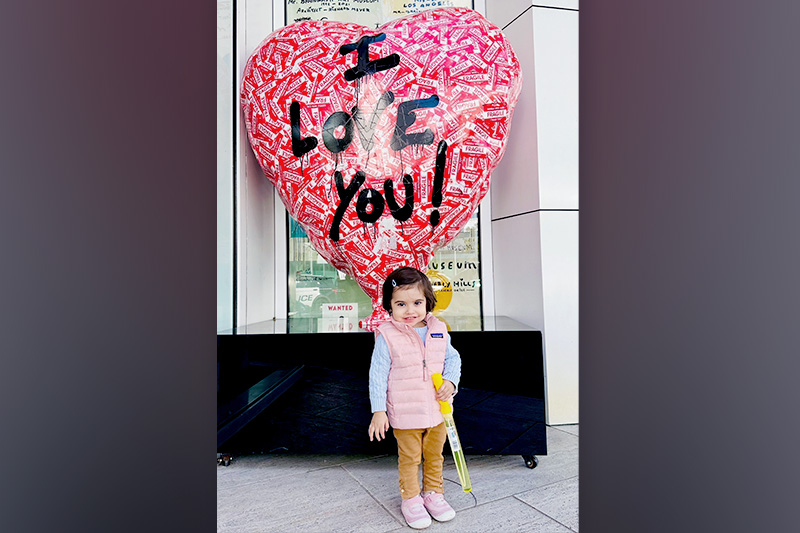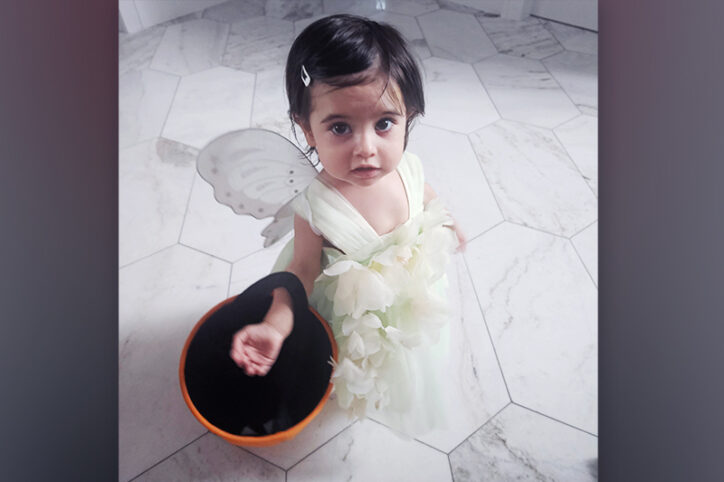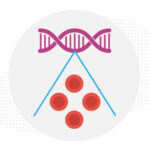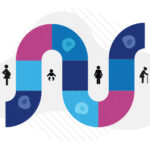Tough cookie: Steroid therapy helps Alessandra thrive with Diamond-Blackfan anemia

Two-year-old Alessandra is many things. She’s sweet, happy, curious, and, according to her parents, Ralph and Irma, a budding food critic. “She’s a food snob!” Ralph says, laughing. “She recognizes the expensive pasta, the homemade versus store-bought food.”
But above all, Alessandra is resilient, and her parents have known that from the very start: At just 4 months old, Alessandra was diagnosed with Diamond-Blackfan anemia (DBA), a rare genetic blood disorder that prevents children from making enough red blood cells, which are needed to carry oxygen throughout the body.

Subtle signs of a life-changing diagnosis
Alessandra’s diagnosis came as a shock. Just after the Fourth of July, her parents brought her to the pediatrician for a routine well-child visit. While there, her doctor noticed some concerning symptoms. “She had a very poor complexion,” Ralph says, “and she was having bouts of endless crying that, at the time, we thought were typical baby crying. … But she wasn’t showing too many other signs.”
After running a blood test, Alessandra’s doctor directed the family to a children’s hospital near their home in Florida. There, they learned that Alessandra’s blood counts were dangerously low. A whirlwind of tests and procedures followed, including two red blood cell transfusions and a bone marrow sample. Shortly thereafter, Alessandra was diagnosed with DBA.
A search for answers leads to Boston Children’s
Determined to find the best treatment for Alessandra, Ralph and Irma began researching their options. Friends in the medical field pointed them to Boston Children’s Hospital as one of very few institutions in the country specializing in DBA. “Since the condition was first identified at Boston Children’s, and because I’m from New Jersey and know the hospital well, we immediately made contact,” Ralph says.
Alessandra was soon connected with Dr. Grant Rowe and his team at the Dana Farber/Boston Children’s Cancer and Blood Disorders Center. Her parents initially flew her to Boston to meet Dr. Rowe and receive testing and some treatment. While most of her care was overseen remotely by the Boston team, she periodically returned for in-person visits, with transfusions continuing through her local providers in Florida.

Steroid therapy helps Alessandra live a “normal life”
For nearly a year, Alessandra received transfusions every 40 to 50 days while her team in Boston worked with her local providers. But during one of their remote visits, Dr. Rowe recommended a new approach that would radically change the course of Alessandra’s treatment: Steroid therapy. Steroids can help increase hemoglobin — a protein found in red blood cells that helps carry oxygen throughout the body.
The transition from transfusions to steroids wasn’t easy. “The first month was rough. She swelled up and was irritable,” he recalls. “And we had to provide a blood sample every 1-2 weeks or so.” But it worked: By February of the following year, Alessandra no longer needed red cell transfusions. “She responded to the steroids,” Ralph says. “That changed our life.”
For Alessandra, this meant newfound energy and consistency in her daily life. “Before, she would have an abundance of energy right after a transfusion, then be completely drained by the end of the month,” Ralph says. “Now, she’s more consistent, and she’s able to live a pretty normal life.”
Remote, coordinated care keeps Alessandra’s treatment on course
While Alessandra’s family still travels to Boston every three to six months, much of Alessandra’s care is coordinated remotely. “Boston Children’s made it as easy as possible for us to be here in Florida while getting expert oversight,” Ralph says. Frequent virtual check-ins and ongoing communication with her care team have provided reassurance every step of the way. “If I have a question, I send an email, and I usually get a quick response,” he says.
Two key figures in Alessandra’s care have been nurse practitioners Karyn Brundige and Christina Barbera. “They remember every detail about her,” Ralph says. “It’s like they only have 20 patients, even though we know they work with so many more.” Their dedication has made all the difference, from navigating prescription challenges to offering guidance in moments of uncertainty.

Navigating life — and health — with small, mighty steps
Although Alessandra is thriving, her journey isn’t over. She remains on a carefully managed steroid regimen, and her team at Boston Children’s works closely with her local team to monitor her growth. “Her size has been affected by the disorder. She’s really little: she’s in 12-month clothing at 2 years old,” Ralph says. “But it’s a day-by-day disorder. We’ll take it one step at a time.”
For now, Alessandra is embracing life as a curious, happy toddler. “She wants to understand everything,” says Ralph. “She’s sweet, friendly, and full of life.” And with support from her dedicated parents and her expert care team at Boston Children’s, she’s embracing life and facing each challenge with strength and resilience — just like she always has.
“She’s a tough cookie. Even when she’s not feeling well, she powers through,” Ralph says. “She’s a pretty special kid.”
Learn more about Dana-Farber/Boston Children’s Cancer and Blood Disorders Center
Related Posts :
-

Blood donations help Kit manage Diamond-Blackfan anemia — so she can dance, sing, and enjoy life
Every month, Kit Murdoch needs a blood transfusion to stay alive. The 2-year-old has Diamond-Blackfan anemia, a rare ...
-

A universal gene therapy for Diamond-Blackfan anemia is poised for clinical testing
Diamond-Blackfan anemia (DBA), first described at Boston Children’s Hospital in 1938, is a rare blood disorder in which the bone ...
-

Blood across our lifetimes: An age-specific ‘atlas’ tells a dynamic story
The stem cells that form our blood, also known as hematopoietic stem cells (HSCs), are with us throughout our lives. ...
-

A potential Diamond-Blackfan anemia treatment swims into view
Zebrafish, besides being popular in aquariums, make good stand-ins for studying human diseases. They share about 70 percent of their genes ...





